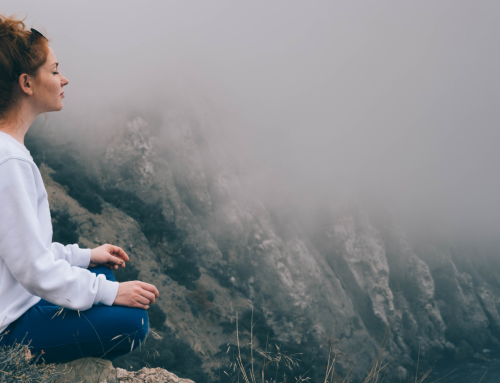Entering the third week of self-isolation, we might all be getting a little edgy and uneased. Although staying inside is the best way to keep us from contracting a lethal virus, the idea that we’re not allowed to go outside could be impeding on our perception of freedom and the fear of becoming irrelevant in our social/professional circles. As I was doing research for this article, I stumbled upon a blog written by Meg Worden: Everything I know about Freedom, I learned in Prison, who candidly narrated her experience while she was incarcerated. Here I quote:
“ Yet sometimes the best way to fully appreciate something is to live without it. Or better yet, to have to redefine it.”
As she describes her life in prison, it dawns on me that it is never about what we’re doing but how we’re doing it that counts. Meg claims:
“While those things [books, or writing, or yoga, or therapy, or endless games of Scrabble] helped, the freedom I found, despite incarceration, came from that hard surrender of accepting my situation, and from refusing to accept the blind storyline around it— the one responsible for allotting parcels of a particular brand of freedom.”
In a weird but not so far fetched comparison, we can see our mandatory stay-in as a prison or a retreat. After all, it all comes down to our perspective. You can choose to feel imprisoned or you can choose to feel like you’re going on a retreat in the comfort of your own home.
Hopefully you choose the latter. So to help you plan a home yoga retreat, I’ve come up with a guideline that I think would help:
1. DECIDE ON THE TYPE & DURATION
The whole idea of retreat is to give yourself a break from the everyday hustle and focus on what you need the most. To generalized, there are two main types of retreats: recreational & spiritual. While spiritual retreats are more studious, meditative and reclusive; recreational retreats are more relaxed, playful, and pampering. Obviously you can mix and match. However, it’s best to have a clear objective of what you’d want out of a stay-at-home retreat before you begin. In addition, having a start and end date will keep you accountable for staying on tasks and complete what you’ve set out for yourself. I believe 3-5 day is a reasonable time for your first stay-home yoga retreat.
2. SET A ROUTINE
Yes, you’ve read that right. Setting a routine is crucial when it comes to retreating. The human mind thrives on routines and having one will keep you on track. If you’ve been quite busy up until the lockdown, perhaps the last thing you’d want to do is keeping up with a schedule. However, research has shown that the three main indicators of good mental health are significance, purpose, and coherence (see here). In the study, people who said “they do pretty much the same things every day found life more meaningful, even after the researchers controlled for mindfulness, positivity and religiousness.”
So what would a typical retreat routine look like? Below are two home retreat sample schedules I’ve come up with. You can reference to them and create one of your own:
Spiritual Yoga Retreat
7:00-7:30: Tea/coffee/fruit
7:30-9:30: Meditation, Yoga (ideally something active like Vinyasa or power flow)
9:30-10:30: Breakfast
11:00-12:30: Dharma talk (on video or podcast)
12:30-14:00: Rest
14:00-15:00: Lunch
15:00-16:30: Reading scriptures, walking/seated meditation in your garden (if you can go outside or somewhere quiet)
17:00-18:00: Yin/ Restorative Yoga & Yoga Nidra
18:30-19:30: Dinner
19:30-20:30: Meditation, journaling, review of afternoon Dharma talk
20:30-21:00: Ready for bed, lights out.
Pampering Yoga Retreat
7:00-7:30:Tea/coffee/fruit
7:30-9:30: Morning Vinyasa Yoga
9:45: Breakfast
10:45-14:00: Start a hobby or take an online course (see below)
14:00-15:00: Lunch
15:00-17:00: Free time
17:00-18:00: Aromatherapy bath, self-massage (myofascia balls or foam rollers), facials, hair treatment, etc.
18:30: Dinner
20:00-21:00: Yin/Restorative Yoga, Yoga Nidra
Free time after but I suggest going to bed before 23:00.
Design your dream yoga retreat. Staying at home has never felt so good.
3. GATHER YOUR RESOURCES
So now that you have a schedule, the next thing you need to do is to gather your resources. Having your resources organized and easily accessible will keep you in the flow.
Here are some links to video lectures from different revered spiritual teachers. Some of these videos are paid and some are not:
A.G Mohan on Yoga Sutras by Patanjali
A.G Mohan on the Bhagavad Gita
Swami Govindananda online courses
The Knowledge Base by Geshe Michael Roach
San Francisco Zen Center Dharma Talk Archive
If you prefer reading over watching videos, I have curated a list of books that I think are worth reading:
Autobiography of a Yogi by Paramahansa Yogananda
Light on Life: The Yoga Journey to Wholeness, Inner Peace, and Ultimate Freedom
Inner Engineering: A Yogi’s Guide to Joy by Sadhguru
Think on These Things by J.Krishnamurti
Life of a Yogi by Sri Dharma Mittra
The Untethered Soul: The Journey Beyond Yourself by Michael Singer
Of course, a retreat is not complete without some endorphins-inducing and soul-cradling yoga classes. Check out these Youtube channels below. Bonus- all of these channels offer full-length yoga classes for free!
How about some personal development? While on your stay-at-home yoga retreat, it’s a great time to start a hobby or take the online course that you’ve never had time for before. With today’s technology, the classes that were once inaccessible for the public are now readily available on your laptop. Below are three websites that I highly recommend if you’re interested in some personal development:
It’s an online learning community for creatives with more than 22,000 online classes and over 5 million students. They’re like Netflix or Spotify, but for learning new creative skills like illustration, design, and photography.
Get a 2-month free trial by clicking on this link and enter the coupon code: igamb4429.
Partnered with +190 universities and companies such as Yale, Standford, NYU, Carneige Mellon, Columbia, and Google, you can find full-length online post-secondary courses where you can take for free (without diploma) or for an affordable price (with diploma). Personally I’m taking the Introduction of Psychology from Yale University and I’m loving it!
Udemy offers over 100,000 online courses on a wide variety of interests from Yoga and Qi Gong to I.T & software and marketing. All of the courses are very affordable and informative. Upon purchase, you’ll have lifetime access to your courses where you can learn on your schedule.
4. GIVE YOURSELF PERMISSION TO INDULGE BUT NOT TOO MUCH
As you can see in the sample schedules, there is plenty of downtime where you can enjoy your favourite Netflix shows or play video games. While watching tv and gaming could be frowned upon in an actual yoga retreat, there is no point refraining yourself from doing so while you’re at home especially if you’re living with family or a roommate. To me, finding balance is extremely important, as being extreme in anything we do may very well backfire from our original objective. Any sort of overindulgence will defeat the purpose of your home retreat, nevertheless giving yourself the necessary downtime would help you relax more. In short, schedule the amount of screen time you think is appropriate and enjoy it! At last, don’t forget to nourish yourself with clean food and drink adequate amount of water daily. It’s easy to slack off on meals or eat excessively while in quarantine. If this doesn’t sound like a broken record yet, just one last reminder- moderation is key.
Never in history had there been a better time to go on your home yoga retreat. Prior to this global pandemic, we rarely carve out time to prioritize our health and mental wellness. Although the current situation is far from ideal, it is up to us to change our perspective to make the best of it. Wherever you are, I hope this guide has shed some positive light. To conclude, I want to share this Taoist quote with you:
“Life is a series of natural and spontaneous changes. Don’t resist them; that only creates sorrow. Let reality be reality. Let things flow naturally forward in whatever way they like.” – Lao Zi
May you wherever you are be happy and free.
Article by Annie Au






